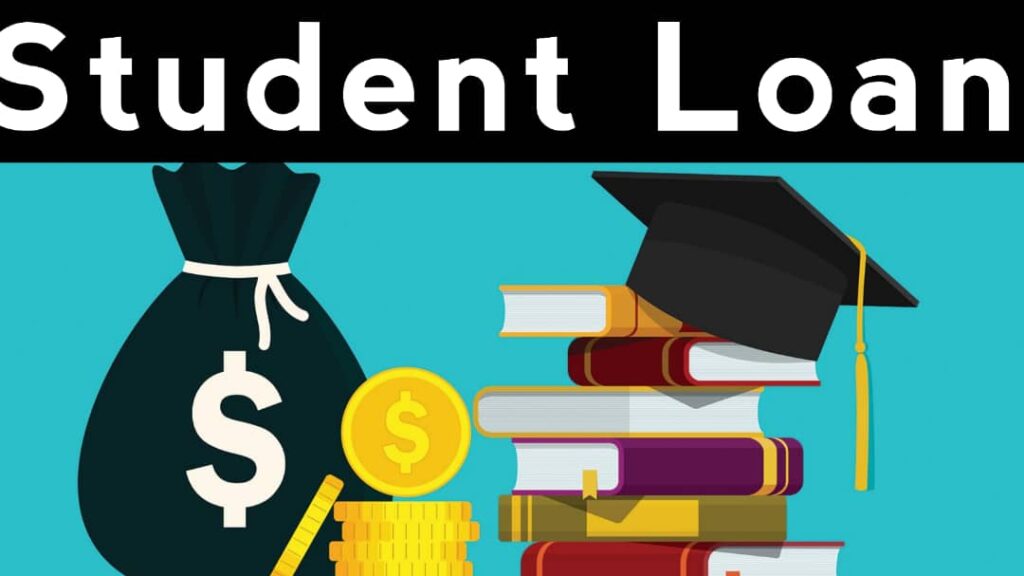STUDENT LOAN

A student loan is a type of loan specifically designed to help students and their families finance the cost of higher education. Here are some key points about student loans:
Purpose: Student loans are intended to cover various education-related expenses, including:
Tuition fees: Student loans can help pay for the cost of attending college, university, or vocational schools.
Room and board: Loans can assist with covering the expenses of on-campus or off-campus housing and meal plans.
Books and supplies: Student loans can be used to purchase textbooks, course materials, and necessary supplies.
Transportation: Loans can help with transportation costs, such as commuting or traveling between home and campus.
Other educational expenses: Student loans may also be used to cover expenses like computer equipment, software, and other educational necessities.
Types of Student Loans: There are different types of student loans available, including:
Federal student loans: These loans are issued by the U.S. Department of Education and offer various benefits, such as fixed interest rates and flexible repayment options. The most common types of federal student loans are Direct Subsidized Loans, Direct Unsubsidized Loans, and Direct PLUS Loans.
Private student loans: These loans are provided by private lenders, such as banks or credit unions. Private student loans often have higher interest rates compared to federal loans and may require a credit check or a cosigner, especially for students with limited credit history.
Eligibility and Requirements: Eligibility criteria for student loans can vary depending on the type of loan:
Federal student loans: Eligibility for federal student loans is generally based on factors like financial need, enrollment status, and citizenship or legal residency. To apply for federal student loans, students must complete the Free Application for Federal Student Aid (FAFSA).
Private student loans: Private lenders typically consider factors such as credit history, income, and debt-to-income ratio when determining eligibility. Students with limited credit history or income may need a cosigner, such as a parent or guardian, to qualify for a private student loan.
Interest Rates and Terms: Interest rates and terms for student loans depend on the type of loan and the lender:
Federal student loans: Interest rates for federal student loans are set by the government and are typically fixed throughout the life of the loan. Repayment terms and options vary depending on the specific loan program.
Private student loans: Interest rates for private student loans can be fixed or variable and are determined by the lender. Loan terms and repayment options may vary among lenders, so it’s important to compare offers and understand the terms and conditions.
Repayment Options: Repayment of student loans generally begins after the borrower completes their education or drops below half-time enrollment. Some key repayment options include:
Standard repayment plan: This is the most common repayment option, where borrowers make fixed monthly payments over a set period, usually 10 years.
Income-driven repayment plans: These plans calculate monthly payments based on the borrower’s income and family size, making repayment more affordable. Examples of income-driven repayment plans in the U.S. include Income-Based Repayment (IBR), Pay As You Earn (PAYE), and Revised Pay As You Earn (REPAYE).
Loan forgiveness and discharge: Certain circumstances, such as working in public service or qualifying for forgiveness programs, may result in partial or complete loan forgiveness or discharge.
Considerations and Risks: When considering student loans, it’s important to keep the following factors in mind:
Borrow responsibly: Only borrow what is necessary to cover educational expenses and consider alternatives, such as scholarships, grants, and part-time work, to minimize the loan amount.
Understand the terms: Read and understand the terms and conditions of the loan, including interest rates, repayment options, and any associated fees.
Repayment obligations: Remember that student loans must be repaid even if the borrower does not complete their education, does not find employment, or is dissatisfied with the education received.
Impact on credit: Timely repayment of student loans can help build a positive credit history, while missed payments or default can have a negative impact on credit scores.
Explore loan forgiveness and repayment assistance programs: Investigate programs that offer loan forgiveness or repayment assistance for certain professions or public service work.
It’s essential to research and compare different student loan options, understand the terms and conditions, and consider seeking guidance from financial aid offices, student loan counselors, or financial advisors to make informed decisions about borrowing and managing student loans.
Grace Period: Many student loans offer a grace period, which is a set period of time after graduation, leaving school, or dropping below half-time enrollment, during which borrowers are not required to make loan payments. The length of the grace period varies depending on the type of loan. It’s important to be aware of the grace period for your loans, as it provides a transition period before repayment begins.
Deferment and Forbearance: If you’re facing financial hardship or experiencing circumstances that make it difficult to make your student loan payments, you may be eligible for deferment or forbearance. Deferment allows you to temporarily postpone loan payments, typically due to enrollment in graduate school, military service, or economic hardship. Forbearance also allows for a temporary pause or reduction in loan payments, but interest continues to accrue on the loan. It’s important to contact your loan servicer to discuss your options if you’re having trouble making payments.
Consolidation and Refinancing: Student loan consolidation involves combining multiple federal student loans into a single loan, simplifying repayment by having only one monthly payment. Consolidation can also potentially lower monthly payments by extending the repayment term. Refinancing, on the other hand, involves obtaining a new loan from a private lender to pay off existing student loans, typically with the goal of securing a lower interest rate or changing the repayment terms. However, refinancing federal student loans into a private loan may result in the loss of certain federal loan benefits, such as income-driven repayment plans and loan forgiveness programs.
Loan Forgiveness and Discharge: There are certain circumstances under which student loans may be forgiven or discharged, meaning you’re no longer responsible for repaying the loan. Examples include:
Public Service Loan Forgiveness (PSLF): If you work full-time for a qualifying public service organization and make 120 qualifying payments while meeting other requirements, you may be eligible for loan forgiveness through the PSLF program.
Teacher Loan Forgiveness: Teachers who work in low-income schools or educational service agencies may qualify for loan forgiveness after completing five consecutive years of teaching.
Total and Permanent Disability Discharge: If you become totally and permanently disabled, you may be eligible for loan discharge, relieving you of the obligation to repay the loan.
Closed School Discharge: If your school closes while you’re enrolled or shortly after you withdraw, you may be eligible for loan discharge.
Other forgiveness and discharge programs: There are additional forgiveness and discharge programs available for specific circumstances, such as the death of the borrower or the closure of a school.
Impact on Credit and Co-signers: Student loans, like other types of loans, can impact your credit history and credit score. Timely repayment of student loans can help build a positive credit history, while missed payments or default can negatively impact your credit. Additionally, if someone co-signed your student loan, such as a parent or guardian, they share responsibility for the loan. It’s important to communicate with your co-signer and keep them informed about your repayment status.
Loan Repayment Assistance Programs: Some employers, especially in certain professions or industries, may offer loan repayment assistance programs (LRAPs) as a benefit to help employees repay their student loans. LRAPs typically involve the employer making contributions toward the employee’s loan payments. If you’re entering a field where LRAPs are common, it’s worth exploring potential employer-sponsored assistance programs.
Remember, it’s crucial to stay informed about the terms and conditions of your student loans, explore repayment options, and communicate with your loan servicer if you encounter difficulties. Additionally, maintaining a budget and financial plan can help you manage your student loan payments effectively while also working towards your other financial goals.





